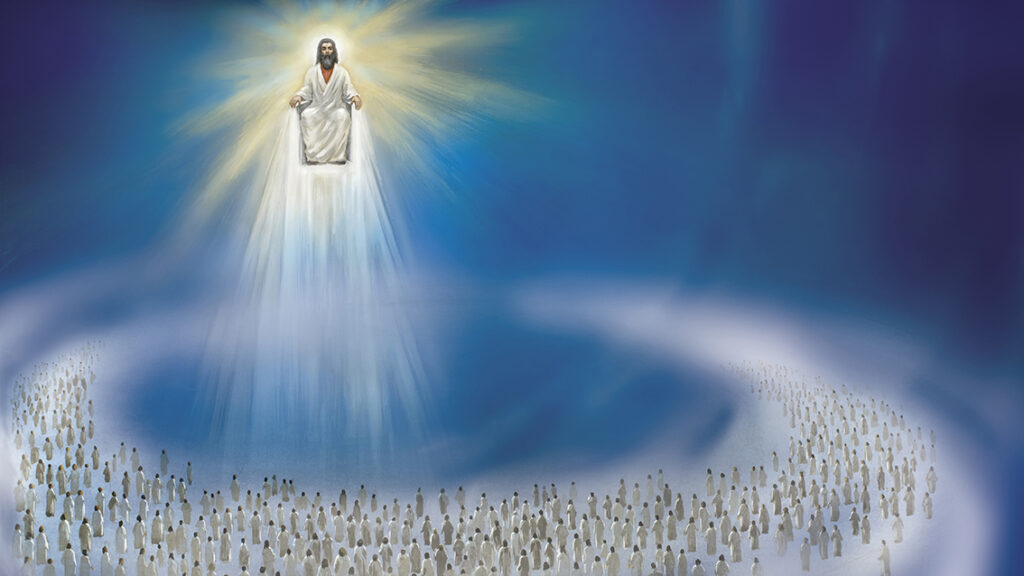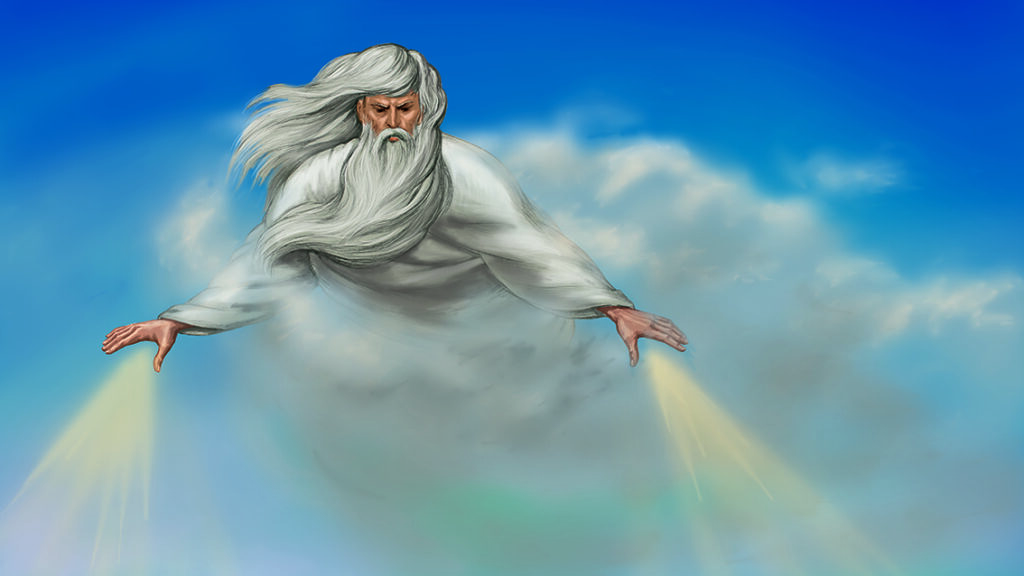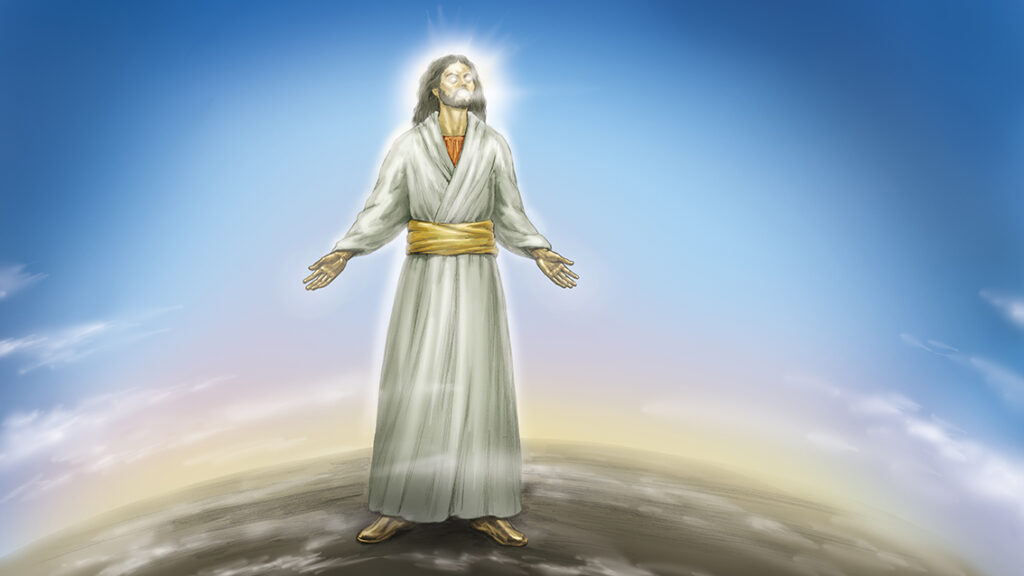
20. THE final woe
Dan 12:2; Matt 25:32-34; Rev 20:11-15
The apostle John warned of three great woes. The third and greatest woe is the judgment.
When the last trumpet sounds, every eye will see Him, and every tribe of the earth will mourn, in expectation of judgment. On that day, Jesus will judge the nations as one who separates the sheep from the goats. The sheep will inherit the kingdom that has been prepared for them from the foundation of the world, and the goats will be sent to the eternal fire that was prepared for the devil and his angels.Matt 25:32-34
Daniel said, “Everyone who is found written in the book, and many of those who sleep in the dust of the earth, shall awake, some to everlasting life, some to everlasting shame and contempt.”Dan 12:2 In Revelation 20, we see the dead appear before the throne of judgment. Seated on a great white throne is One “from whose presence earth and heaven fled away, and no place was found for them.”Rev 20:11 No one will be righteous before Him.
Everyone who is found written in the book, and many of those who sleep in the dust of the earth, shall awake, some to everlasting life, some to everlasting shame and contempt.
Daniel 12:2
John described the judgment of the living and the dead, saying, “The books were opened, and another book was opened, which is the Book of Life, and the dead were judged from the things that were written in the books, according to their deedsRev 20:12 …. And the sea gave up the dead—and death and Hades gave up the dead.”Rev 20:13
The sea represents salvation, and Hades represents the place of the unsaved.
If anyone’s name is not written in the Book of Life, he will be thrown into the lake of fire. As for “the cowardly, unbelieving, sinners, abominable, murderers, sexually immoral, sorcerers, idolaters, and all liars, their part is in the lake that burns with fire and sulfur, which is the second death.”Rev 21:8 For “death and Hades will be thrown into the lake of fire.”Rev 20:14

21. The Judgment of Babylon
In Revelation 18, John described the judgment of Babylon by the Ten Kings of Europe. In verses 10, 17, and 19, John says, “in one hour your judgment has come,” “in one hour such great wealth has been laid waste,” and “in our hour she has been laid waste.”
We understand that this “hour” was 533 years, or 1/12 of the human clock of 6,400 years, from the East-West Schism in 1054 AD until the mid-16th Century, when all the Kings of Europe rejected their political relationships with the Pope. This was the judgment of “the great harlot that committed fornication with the kings of the earth.”
But in verse 8, John speaks of the future, when he says, “in one day her plagues will come, plagues of death, mourning and famine, and she will be burned up with fire; for the Lord God who judges her is strong.”
in one day her plagues will come, plagues of death, mourning and famine, and she will be burned up with fire; for the Lord God who judges her is strong.
Revelation 18:8
This is the only time that the Book of Revelation uses the expression “one day.” What does it mean? The apostle Peter warned us of the Day of the Lord, saying, “with the Lord, one day is as a thousand years.”2 Pet 3:8 Indeed, one thousand years from this judgment by the Ten Kings, brings us to the Day of the Lord, when God will repay the Great Harlot with fire.
In Revelation 18, verse 21, John said “another strong angel took up a stone like a great millstone … saying, “so will Babylon be thrown down with violence, and will not be found any longer.” Jesus warned us that it would be better to be bound to a great millstone and thrown into the sea, then to cause one of these little ones to stumble.” Since, the Reformation, it has been revealed that the Catholic Church has sexually abused hundreds of thousands of young children— more than 300,000 in France alone. The apostle John concluded Revelation 18, saying, “And in her was found the blood of prophets, and of saints and of all who have been slain on the earth.”Rev 18:24

22. The Lord’s Day
In Revelation 1, John was taken by the Spirit into the Lord’s Day. He began the Book of Revelation with its climax—the climax of our faith. It is this Day that every Christian looks forward to.
But why has John called it “the Lord’s Day” and not “the Day of the Lord?” The answer is revealed in the statement “I am the Alpha and the Omega,” which appears in verse 8.
God was the Lord in the Old Testament. He was called Adonai Yihvah, the expression we read in our Bibles as the Lord God, as in Isa 61:1—“the Spirit of the Lord God is upon Me.”
After Jesus endured the cross, God made Him the Lord, as Peter explained in Acts 2:36 and as Paul explained in Phil 2:9. After Jesus rose, He said, “All authority has been given to Me in heaven and earth.”Matt 28:19
On the Lord’s Day, God will become the Lord again. He is the First and the Last.
When all things are subjected to Him, then the Son Himself will also be subjected to the One who subjected all things to Him, so that God may be all in all.
1 Corinthians 15:28
This is dramatically illustrated of Revelation, where the apostle John never calls Christ the Lord in the Lord’s Day or thereafter! In Rev 11:8, Rev 14:13, Rev 17:14, and Rev 19:16 John calls Christ the Lord, but after the Lord’s Day, in Rev 1:8 and Rev 1:10, Rev 4:8 and Rev 4:11, Rev 11:15 and Rev 11:17, Rev 15:3 and Rev 15:4, Rev 16:7, Rev 18:8, and Rev 22:5 and Rev 22:6, John called God “the Lord.”
In the New Testament, there are about 500 uses of the phrase “Lord,” and only Christ is called “the Lord” after His resurrection, and before the Lord’s Day, except when referencing Old Testament passages or calling God the Lord of Creation.
The apostles used the expressions “Day of the Lord” and “Day of Christ” to signify the Day of Christ’s return, but when speaking of the Father, Peter called this Day “the Day of God”2 Pet 3:12 to signify the Day of destruction. It seems that John called it “the Lord’s Day” to signify the Day when God becomes the Lord again.
23. Coming to the Ancient of Days
Dan 7:13-14, 1 Cor 15:24, Rev 11:15-17
Daniel had two visions of the Lord’s Day. Both were repeated in Revelation 1.
In the first vision, he saw the Son of Man coming to the Ancient of Days, the everlasting God. Daniel said that he was seeing visions in the night:
“And behold, one like the Son of Man,
Coming with the clouds of heaven!
He came to the Ancient of Days,
And they brought Him near before Him,
Then to Him was given dominion and glory….
His kingdom shall never be destroyed.”Dan 7:13-14
Here, Daniel describes the Lord’s Day as the day when Christ hands over the kingdom to God. This is the same scene that we find in Revelation 1: “Behold, He is coming with the clouds, and every eye will see Him, even of those who pierced Him; and all the tribes of the earth will mourn over Him.”Rev 1:7
We give you thanks, O Lord, God, the Almighty, who were and who are, because You have taken Your great power and have begun to reign.
Revelation 11:17
The meaning of Daniel’s vision was explained by Paul in 1 Cor 15:24, who wrote, “Then comes the end, when He hands over the kingdom to God, the Father.”
In Rev 11:15-17, John again explained the Lord’s Day as the Day when Christ hands over the kingdom to God, saying, “The kingdom of the world has become the kingdom of our Lord and His Christ. We give you thanks, O Lord, God, the Almighty, who were and who are, because You have taken Your great power and have begun to reign.”
Here, God was called “God Almighty.” God had not been called “God Almighty” since Christ told Moses that He had only appeared to men as “God Almighty.”
The expression “God Almighty” is used six times in the Old Testament, and six times in the Book of Revelation.
On the Lord’s Day, the Almighty God will take back His power, and He will begin to reign again.

24. The Glorious Man
Dan 10:5-6, Dan 12:1-3, Rev 1:13-16
In Dan 10:5–6, we find Daniel’s second vision of Christ in the Lord’s Day, which is also repeated in Revelation 1.
In his first vision, the Son of Man handed over the kingdom to God. In his second vision, Daniel sees the Angel Michael, “WHO IS LIKE GOD,” stand up on the last day.
“I lifted my eyes and looked, and behold, a certain man clothed in linen whose waist was girded with gold of Uphaz! His body was like beryl, his face like the appearance of lightning, his eyes like torches of fire, his arms and feet like burnished bronze in color, and the sound of his words like the voice of a multitude.”
The vision of Christ in Dan 10:5-6 is the same vision that John saw in Rev 1:13-16. It is a vision of Christ on the Lord’s Day.
At that time Michael shall stand up, the great Prince who stands watch over the sons of your people
Daniel 12:1
In the Book of Daniel, an angel was sent to explain the meaning of Daniel’s vision. He said that it described “what will happen to your people in the latter days.” The explanation was long.
In Daniel 11, the angel described “the king of the north,” who would oppress the saints. Verses 1–3 describe the kings of Persia and Alexander the Great. Verses 4–30 describe the kings of the Seleucid Empire from 320 BC to 163 BC. In verses 31–35, the king of the north is Satan. In verses 36–39, the king of the north is the pope, who reigned with the ten kings. Finally, in verse 40, the angel described the king of the north as Gog, who would appear in the end time to attack Israel.
In Daniel 12, we finally come to the explanation of the vision—we see the One whom Daniel saw in Daniel 10. In the Lord’s Day, the angel Michael, WHO IS LIKE GOD, “shall stand up … and many of those who sleep in the dust of the earth shall awake.” He is the one we see in Rev 1:13-16.


